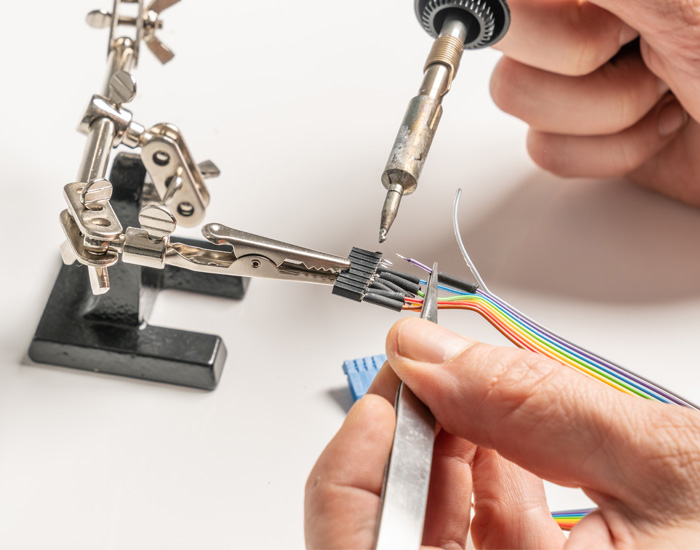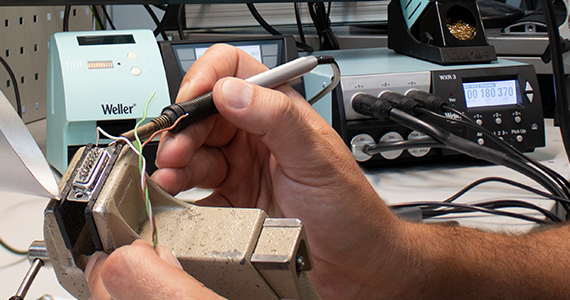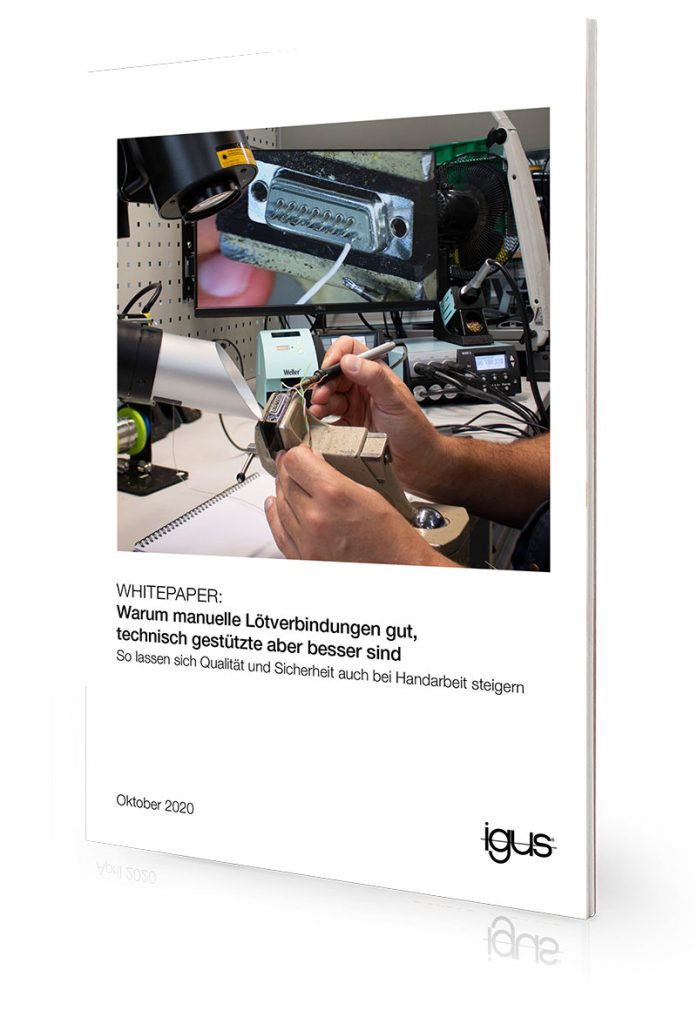Which equipment do I need for an optimal soldering result?
Beke Nieszytka | 4. November 2020
Soldering is an important part of working with electronic components. For components to be firmly connected to each other and for current to flow without problems, you need the right soldering technique, which we have described in our blog post “Tips & Tricks, how to solder with high quality by yourself” as well as the right equipment. Based on our daily work in cable harnessing, we will show you in this article which equipment makes your soldering work easier.

Preparation is essential
Ensure a clean and dust-free working environment. Both the component to be soldered and the soldering tip should be free of residue and absolutely clean. If components contain excess material, you can carefully remove this with fine sandpaper and then remove with compressed air spray.
We also recommend a heat-resistant underlay for your table or workbench. In addition, a small vice, which – brought into the correct position – holds the component to be soldered in place during the soldering process, so that the component cannot slip and can cool down after soldering.
Besides a suitable workplace, the choice of solder and flux is another important factor:
Lead-free solder has the advantage that in addition to the main component tin (Sn – 90 to 100%), other metals are often added, namely metals such as silver (Ag), copper (Cu) or gold (Au). Due to these metals, the specifications of the solder change slightly and prevent the soldering surfaces from deposition. Our tip: if you want to use lead-free solder, you should use reliable industrial products.

Fluxes have the task of dissolving existing oxide layers on the soldering surfaces, removing them and preventing the new formation of such layers during the soldering process. Flux is located inside a soldering wire, which is led to the components to be soldered during the soldering process. The solder melts and the flux is released and evaporates. These are harmful vapours that should not be inhaled.
Solder vapour extraction systems with an integrated filter provide a remedy here. They are available in different sizes and price segments.
Optimum soldering results: soldering stations instead of soldering irons
Digression: history of the soldering iron
Soldering is a very old technique, which was probably around before 5,000 BC. The soldering of electronic components, which we know today, was first made known in 1921 by the German electrical engineer, Ernst Sachs, who invented the soldering iron. In 1941, soldering was revolutionised by Carl E. Weller, who developed a transformer-based instant brazing method and founded the Weller Manufacturing Company in 1945._x000D_
In 1960, Weller patented the Magnastat soldering iron in the USA, which used a magnetic component to control the temperature at the tip of the iron, and after establishing his factory in Germany, served industrial markets throughout Europe. Weller Deutschland became the market leader for the development and manufacture of hand soldering products worldwide.
The quality of soldered joints depends on various parameters. Hence, the contacting galvanised by hand is accompanied by certain fluctuations. It is considerably more convenient and also more reliable to work with a soldering station than with a soldering iron. Soldering stations offer the possibility to make an exact presetting of the soldering temperature, which does not change during the entire soldering process and, unlike with soldering irons, does not have to be checked again and again. Nevertheless, it is still necessary to set the correct temperature in advance to make exact soldering points possible.

Integrated heating elements conduct the heat directly to the soldering tip. Solder is inserted automatically and the soldering point is set. Similar to quick-release clamps, soldering tools can be changed quickly and without complications at professional stations today. Optionally, most manufacturers also offer specially shaped irons for desoldering, which are used to remove solder from components. The liquid solder is sucked off by means of vacuum operation, whereby the design prevents clogging during suction.
We at igus® not only want to implement soldered connections at a consistent level, but also provide our customers with optimum and high-quality soldering results. Based on this high quality standard, we looked for a solution that makes this possible.
For example, since August 2020 we have been using soldering stations from Weller, which support our trained specialists in the harnessing of our readycable® cables on a daily basis. The Weller Professional devices convinced us with their user-friendliness, handling and the possibility of quickly changing the soldering tips, creating the ideal working conditions for high-quality harnessed cables.
For further assistance on how to get the best soldering result, just have a look at our free white paper.

